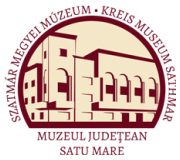Szőcs Péter Levente (szerk.): Călătorii istorice pe Valea Someşului. Ghid turistic (Satu Mare, 2014)
Culciu
according to local tradition, it was donated to the congregation at Homorodu de Jos. Petin was mentioned in 1391 for the first time, with the name “Bazand”. It was a village of small nobility, shared among numerous owners during the centuries. The Calvinist church was built in 1873. Ruşeni was mentioned in 1411 for the first time. The Orthodox church, Saint Michael and Gabriel Archangels was built in 1870 on the old wooden ones spot. CULCIU Traveling forward on the left bank of the Someş River one can pass through settlements belonging to the administrative unit of Culciu, in the following order: Apateu, Corod, Culciu Mic, Culciu Mare - the residence of administration, Cărăşeu, and Lipău. The most important archaeological discoveries were found on the territories of Culciu Mic and Culciu Mare settlements. The site Culciu Mare - Sub Grădini is one of the most intensely researched Bronze Age settlement belonging to the Suciu de Sus culture. The systematic archeological researches were started in 1969 and continued yearly until 1988. During the campaigns altogether 34 surface dwellings were identified, preserved as burned-clay platforms, together with a great number of pits dig into the soil and open fire-places. The abundant archaeological discoveries are in its greatest part pottery belonging to the classical phase of the Suciu de Sus culture, while the smaller Petin • Pettyén Curia Böszörményi Böszörményi kúria The Böszörményi manor-house Vas de epoca bronzului, descoperit la Culciu Mare Nagykolcson feltárt bronzkori tál Bronze Age bowl, discovered at Culciu Mare 63
